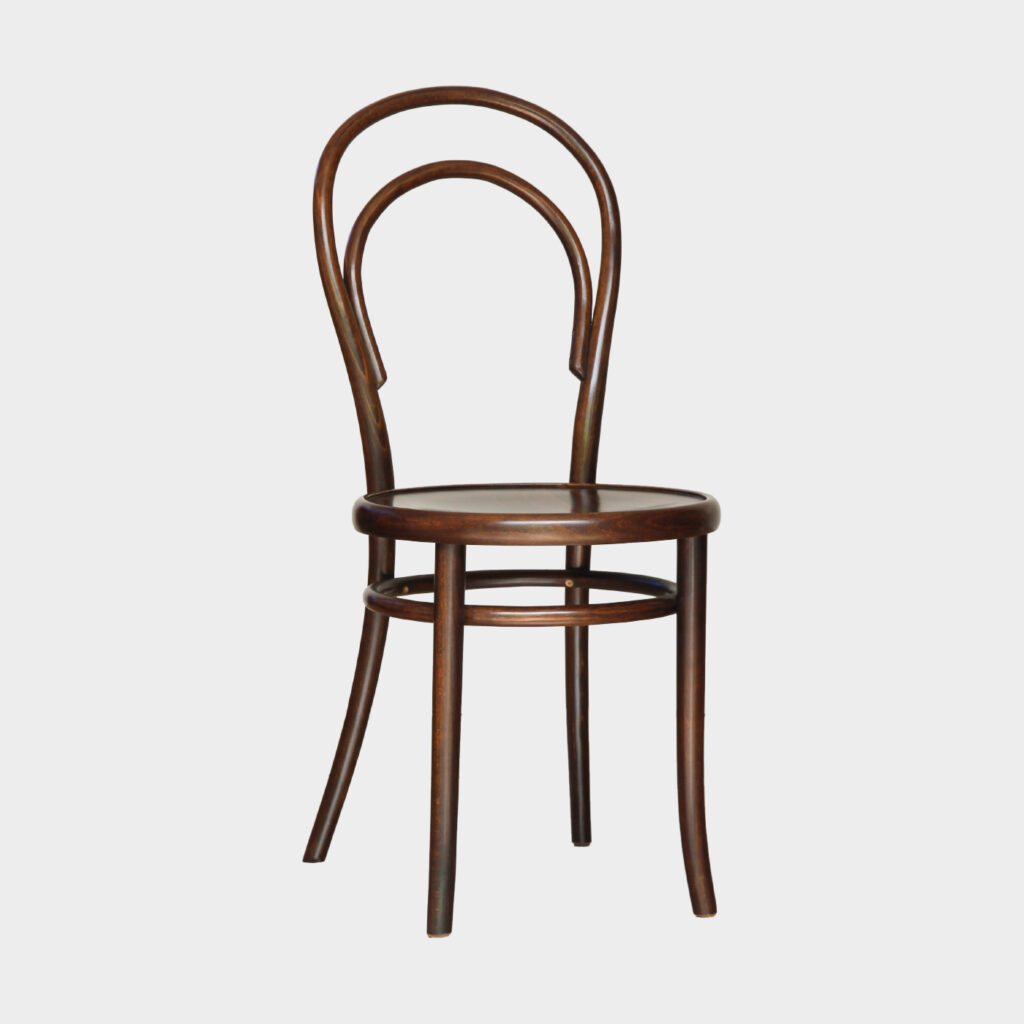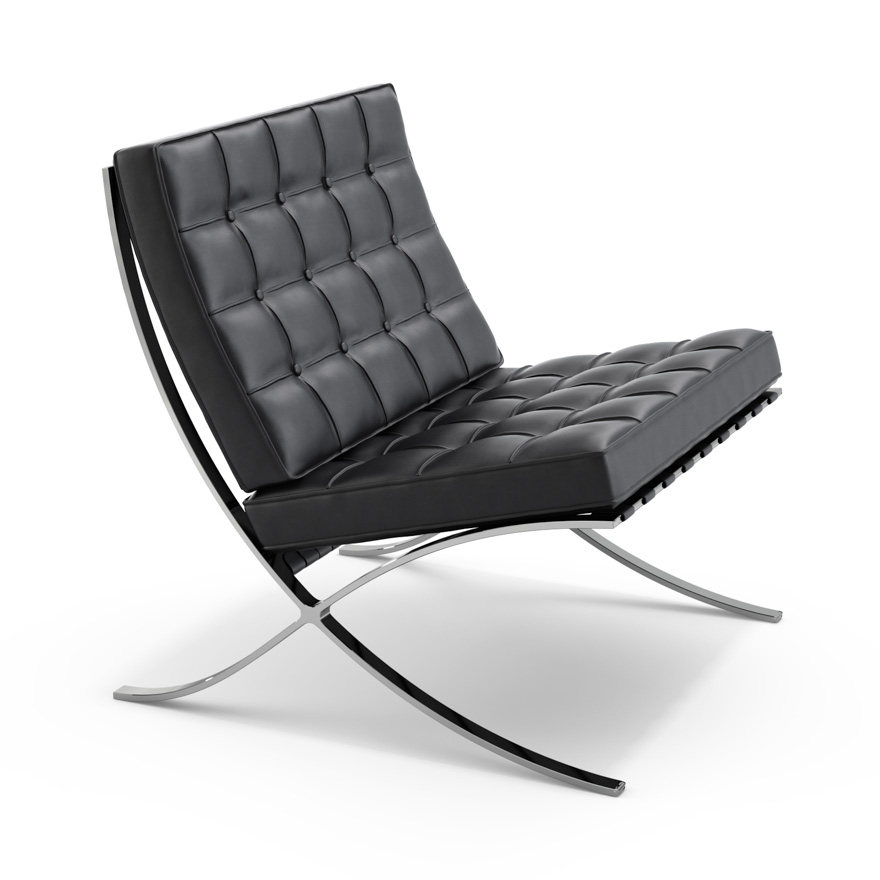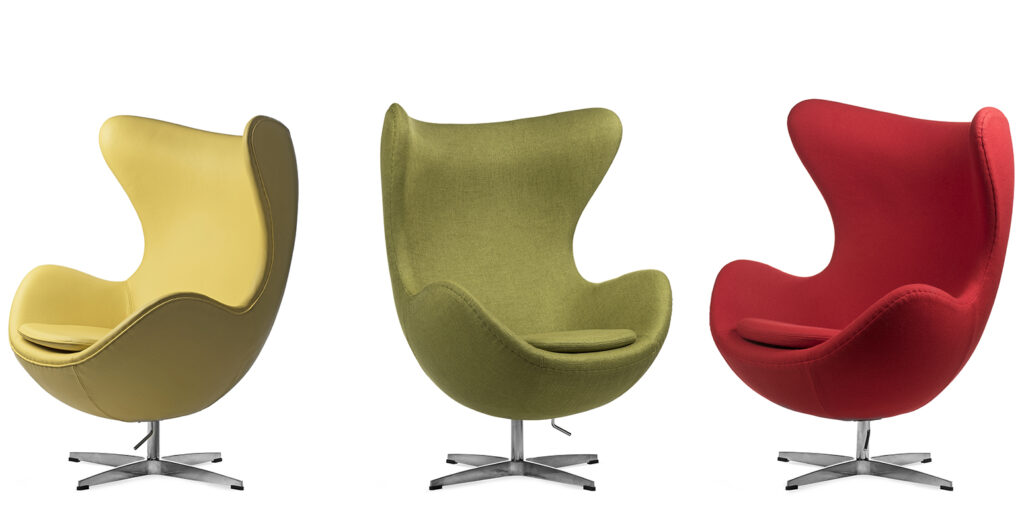Snuffboxes: Ornate Relics of a Bygone Era
Decorative snuff boxes were highly ornate containers for powdered tobacco, the consumption of which was a fad that swept the 17th century. By the age...
Maya M. Tola 27 February 2025
Apparently sitting is the new smoking and it will slowly kill us all. But given our current reality, we don’t have that much choice about it. One choice we do have though is what we sit on. And a chair can really make a difference. Imagine doing your homework as a child sitting on a really uncomfortable dining chair. All concentration has gone (if there was any, to begin with) and you become all fidgety. Or think about an evening after work when you can sink luxuriously into a lovely armchair, that is both soft and supportive at the same time – think of the feeling of comfort, calm, and safety. And now tell me chairs don’t matter… or join DailyArt Magazine in exploring the chairs that changed the way we sit.
The name Thonet became a synonym for bentwood chairs, so to give the company and its creator their due we’ll look at three of their designs. You have probably come across at least one of them during your life.
Michael Thonet (1796–1871) was a German-Austrian cabinet maker, known for the invention of bentwood furniture. In 1819 he started up as an independent cabinetmaker. Immediately, he started experimenting with new techniques that allowed him to bend wood. His breakthrough came when he managed to bend light, strong wood into curved shapes by forming the wood in hot steam. In this way, he was able to produce elegant, durable, and lightweight furniture that quickly became very fashionable.
In the 1840s he moved from Boppard, Germany, to Vienna, Austria. This came about after he received an invitation from Prince Klemens Wenzel von Metternich to present his furniture at the Vienna court. In 1850, he produced his famous No.1 chair and in 1851 he received a bronze medal at the Great Exhibition in London (the one of Crystal Palace fame). This was his international breakthrough.
Known in its day as the bistro chair it is now often called “The Chair of Chairs”. This is the item that launched the bentwood technique into the global market. Launched in 1860 it was quickly embraced by European restaurants and you may have come across some examples and copies, as it is still widely used. It became one of the first mass-produced pieces of furniture. Originally made of six pieces of steam-bent wood, ten screws, and two nuts, this design has evolved only slightly over time. In 2009, it was redesigned by James Irvine, an English designer, and retailed by MUJI. The goal was to refresh the image and make it more attractive to younger audiences.

I don’t know about you, but when I hear “Thonet chair” this is the one I always imagine. This is definitely one of the most successful chair designs ever produced. Created in the second half of the 19th century it hasn’t aged at all but instead has become a classic. The bent elements that embellish the central part of the back also make the chair more comfortable. The back and rear legs are made of a single piece of wood. As tradition dictates, it is today still being bent into shape using the steam technique.



We will now move firmly into the realm of Modernism with its focus on function aligning perfectly with its utilitarian form. Marcel Breuer (1902–1981) was first and foremost an architect. But he also designed furniture, and when he did, his pieces became icons and sometimes more familiar to us than his buildings. He was one of the first students of Bauhaus, and he was mentored by Walter Gropius. He quickly became the head of the Bauhaus carpentry workshop.
Following Gropius’s advice, he emigrated from Germany in 1936. Starting with London he lived in many countries, steadily developing his architectural career. Some of his most famous buildings include the IBM Research Center in La Gaude, France, UNESCO’s headquarters in Paris, and the US headquarters of Armstrong Rubber Co. in Connecticut. His style quickly developed towards Brutalism, which seems hard to believe when you look at the light chairs below.
Despite the common belief, Breuer did not design this chair specifically for Wassily Kandinsky. What happened is that Kandinsky, who was at the Bauhaus at the same time, admired the ready design and Breuer made a duplicate for his private quarters. Inspired by the frame of a bicycle and influenced by the constructivist theories of the De Stijl movement, Breuer reduced the classic club chair to its elemental lines and planes. He stripped it of its weight but retained the elegance of the simple clean lines. Interestingly, it was the Thonet factory that produced the first industrial version of the chair. This design is also one of the early examples of bent tubular steel furniture invented by Breuer.



This chair takes its name from Breuer’s adopted daughter Francesca. Originally also produced by the Thonet factory but since 1968 it has been produced by Knoll (you can read more about Florence Knoll) here). It was the first tubular-steel framed and cane seat chair to be mass-produced. Since 1928, approximately 250,000 of the chairs have been purchased. The cantilevered form exploits the possibilities unique to the materials and gives the chair added flexibility and comfort. You can even slightly rock in the chair, which is very soothing.



It is hard to believe that this chair was designed in 1929. It is now firmly lodged in our collective memories. It is usually associated with the lobbies of large office buildings. Originally designed for the German Pavilion at the International Exposition of 1929, which was hosted in Barcelona, Spain.
Unlike many Bauhaus designs created for the masses, this one was intended for only a select few. It was designed for Spanish royalty who were overseeing the exhibition’s opening ceremony. The simplicity of its lines makes it timeless, probably why it’s so popular with the interior designers of financial institutions.



Charles and Ray Eames worked together throughout their careers. Their goal in design was “getting the most of the best to the greatest number of people for the least”. Charles Eames and Ray Kaiser met at Cranbrook Academy of Art in 1940. A year later they married. During their honeymoon, they relocated from the Midwest to California where shortly after they opened the now-famous Eames Office.
While still at Cranbrook, Charles began working with Eero Saarinen. Together they created a chair that was molded from a single piece of plywood – The Organic Chair, which they entered into a competition and it won. However, they didn’t consider it a success, as it could not be mass-produced. The idea of a chair molded from a single piece of material stayed with Eames and finally materialized into an item that could be mass-produced.
It was just a matter of finding the right material, plastic and fiberglass proved to be perfect for the purpose. The chair made from Zenaloy, which is polyester reinforced with fiberglass, was first developed by the US Army during World War II. After debuting at the “Low-Cost Furniture Design” competition organized by the Museum of Modern Art in 1948, the Plastic Armchair (A-shell) and Plastic Side Chair (S-shell) were launched onto the market in 1950. These were the very first mass-produced plastic chairs in the history of furniture. Below, you can see the many variations that are now available on the market.



Now, this chair is a very different affair altogether. As, atypically for the couple, the lounge chair was designed with high-end customers in mind. It marked their return to molded plywood. Lavish in its comfort, its design was inspired by the English club chair. Billy Wilder received the second Eames’ Lounge Chair and Ottoman hot off of the production line. It was the couple’s way of reciprocating a gift Wilder had given them years earlier – a modernist chair, which the couple adored. It was also the first chair to be introduced to a national audience on primetime TV by Arlene Francis on her Home Show.



Eero Saarinen (1910–1961) was a Finnish-American architect and designer. His father Eliel was a lecturer at the Cranbrook Academy of Arts. This is where Eero met both Charles and Ray Eames and Florence Knoll. As an architect, he sometimes worked for his father. As a designer though he associated mostly with the Knoll company. Florence Knoll asked Saarinen to design a chair that is “like a great big basket of pillows that I can curl up in” and that’s how the “womb chair” was born.
The Tulip chair came into existence to solve a different problem. Saarinen said:
The undercarriage of chairs and tables in a typical interior makes an ugly, confusing, unrestful world. I wanted to clear up the slum of legs. I wanted to make the chair all one thing again.
Eero Saarinen, Museum of Modern Art (MoMA).
Hence, the Tulip chair and the entire Pedestal collection is single-legged. He had hoped to produce the chair as a one-piece unit made entirely of fiberglass, but this material was not able to support the base, and prototypes were prone to break. As a result, the base of the tulip chair is made of cast aluminum with a finish to match the upper shell, giving the appearance of a single unit. The upper shell is made of molded fiberglass, with a reinforced, plastic-bonded finish.



Arne Jacobsen (1902–1971) was a Danish architect and designer. Now, remembered mostly as a designer, Jacobsen perceived himself primarily as an architect, an example, of his work is St. Catherine’s College in Oxford. Most of his furniture designs resulted from the collaboration with the furniture manufacturer Fritz Hansen which he initiated in 1934. Whilst he developed his lamps and light fixtures with Louis Poulsen. The plywood designs of Charles and Ray Eames inspired a lot of Jacobsen’s work.
As an architect, Arne Jacobsen designed the SAS Royal Hotel, now known as the Radisson Collection Hotel, Royal Copenhagen. It was for this commission that he also designed the famous Egg chair. It was inspired by Eero Saarinen’s “womb chair”, and borrows some of its traits. The idea is that the chair is both comfortable, but also provides a level of privacy. Which is probably why it so often appears in airport lounges. It allows business class passengers awaiting their flight to continue working nested within the chair’s protective wings.



Verner Panton (1926–1998) was another Danish furniture and interior designer. During the first two years of his career, 1950–1952, he actually worked at the architectural practice of Arne Jacobsen. But he quickly found the environment suffocating and chose instead to pursue a solo career.
The Stacking Chair (or the S-Chair), designed in 1960, was the very first single-form injection-molded plastic chair. Unlike the Eames Plastic Chair, it didn’t even need legs. It was free form and futuristic and completely self-sufficient. The functionalist idea of designing a stackable chair was first expressed by Mies van der Rohe before World War II. His idea persisted and went on to inspire Panton’s chair design which combined with the injection-molding technique gave rise to this beautiful and elegant chair.



DailyArt Magazine needs your support. Every contribution, however big or small, is very valuable for our future. Thanks to it, we will be able to sustain and grow the Magazine. Thank you for your help!